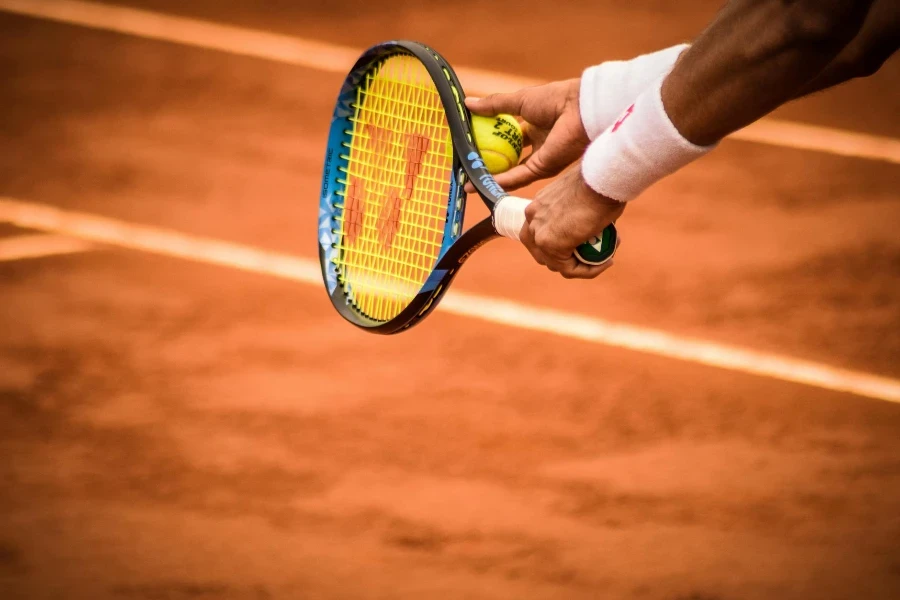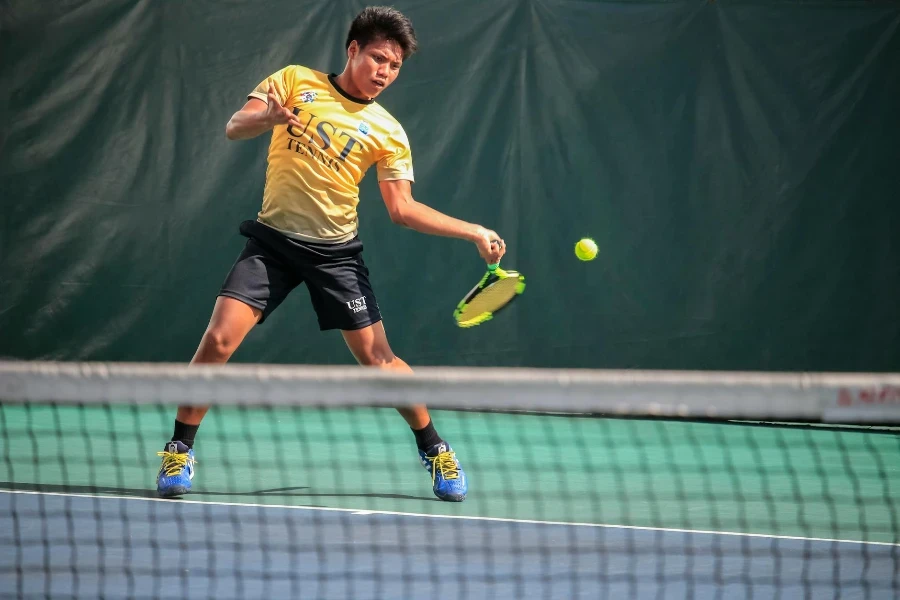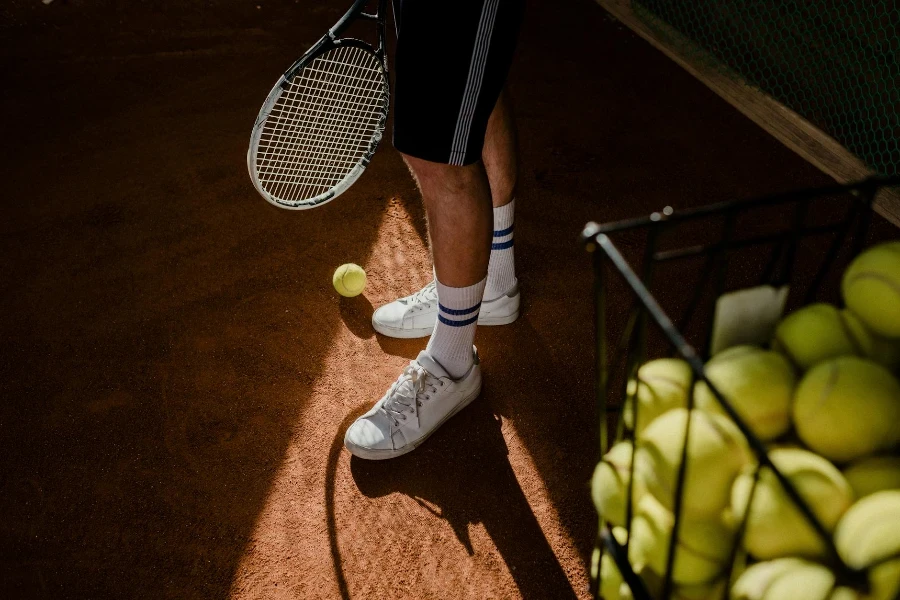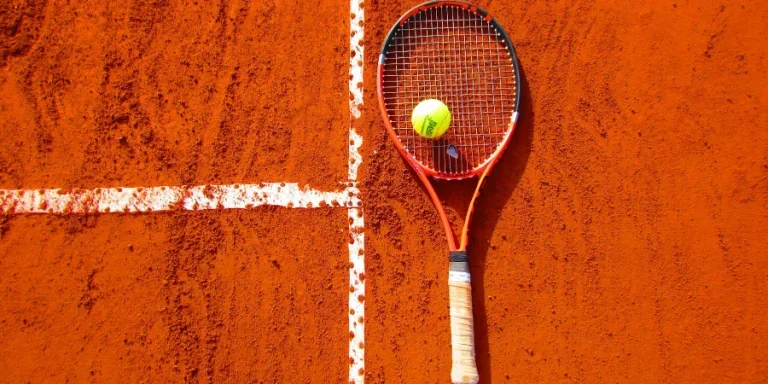The tennis racket is an extension of every player’s arm, a crucial ally on the court that can significantly affect the game’s outcome. Whether you’re a seasoned pro or a beginner, understanding the nuances of a tennis racket can elevate your play. This guide will delve into what makes a tennis racket so vital, its popularity, and how to choose and use one effectively.
Table of Contents:
– What is a tennis racket?
– The popularity of the tennis racket
– Is a tennis racket good?
– How to choose a tennis racket
– How to use a tennis racket
What is a tennis racket?

A tennis racket is more than just sports equipment; it’s a precision tool designed to enhance every aspect of a player’s game, from power serves to delicate drop shots. At its core, a tennis racket consists of a handle (grip), a frame that extends into a hoop where a network of strings forms the hitting surface. The evolution of racket technology has seen materials transition from wood to lightweight composites like carbon fiber, significantly affecting performance.
The design and construction of a tennis racket play pivotal roles in its functionality. The size of the head, the pattern of the strings, and the weight distribution are critical factors that influence playability. A larger head size offers more power and a larger sweet spot, making it forgiving for beginners. In contrast, a smaller head provides seasoned players with greater precision and control.
Modern rackets also feature advancements in string technology and aerodynamics, allowing players to generate more spin and maintain control over fast swings. The interaction between the racket’s physical properties and a player’s technique is fundamental, making the choice of a tennis racket a highly personalized decision.
The popularity of the tennis racket

The tennis racket’s popularity can be attributed to the global appeal of tennis itself. As a sport, tennis has a rich history and a diverse following, with millions playing and following professional circuits like the Grand Slams. The tennis racket, as the primary piece of equipment in the sport, has become an icon, evolving alongside the game to meet the demands of players at all levels.
Marketing and endorsements by top players have also played a significant role in popularizing specific racket models and features. When a renowned player attributes part of their success to their choice of racket, amateurs and enthusiasts are naturally inclined to follow suit, hoping to emulate their heroes’ success. This phenomenon has led to a wide variety of rackets catering to different playing styles and preferences, making the market as diverse as the sport’s player base.
Moreover, the continuous innovation in racket technology keeps the interest alive. Manufacturers strive to introduce features that promise better performance, comfort, and injury prevention, appealing to players’ desires to improve their game. This relentless pursuit of perfection keeps the tennis racket in the spotlight, making it a topic of interest and discussion among the tennis community.
Is a tennis racket good?

The quality of a tennis racket can significantly influence a player’s performance, but it’s important to remember that “good” is subjective and varies based on individual needs and preferences. A racket that’s perfect for a professional player might not suit a beginner. The key indicators of a good tennis racket include its construction quality, how well it matches the player’s style, and its contribution to improving the player’s game.
High-quality materials and construction ensure durability and consistent performance over time. A good tennis racket should feel solid in hand, with no unwanted vibrations, and provide a comfortable grip. It should complement the player’s physical capabilities and playing style, whether they rely on power, precision, or a blend of both.
Moreover, a good tennis racket should offer the right balance between power and control. It should enable the player to hit their shots with confidence, whether they’re aiming for a powerful baseline rally or a delicate volley. The racket’s ability to enhance a player’s strengths and mitigate weaknesses is a hallmark of its quality.
How to choose a tennis racket

Choosing the right tennis racket is a critical decision that can influence your enjoyment and success in the sport. The process involves considering several factors, including your skill level, playing style, and physical attributes. Beginners might prefer rackets with larger head sizes for a bigger sweet spot and more forgiveness on off-center hits. In contrast, advanced players may opt for smaller heads for better control and precision.
The racket’s weight is another crucial consideration. Heavier rackets offer more power and are steadier on impact, reducing the chance of injury. However, they require more strength to maneuver. Lighter rackets are easier to handle, making them suitable for players who value speed and agility.
Grip size is also essential for comfort and injury prevention. A grip that’s too small or too large can lead to hand strain and affect your ability to control the racket effectively. Testing different grip sizes or consulting with a professional can help you find the right fit.
How to use a tennis racket

Using a tennis racket effectively goes beyond simply holding it and hitting the ball. Proper technique is crucial for maximizing the racket’s potential and minimizing the risk of injury. The grip is the foundation of every shot, with different grips like the Continental, Eastern, and Western serving various purposes, from serving to groundstrokes to volleys.
The stance and swing path are also vital, with the goal of aligning the racket’s sweet spot with the incoming ball for optimal impact. Practicing drills and working with a coach can help refine these techniques, ensuring that you’re using the racket to its full potential.
Furthermore, regular maintenance, including restringing and regripping, keeps the racket in top condition, ensuring consistent performance. Understanding the interplay between the racket’s features and your style of play can transform your game, turning the racket from a mere piece of equipment into a true game-changer on the court.
Conclusion: The tennis racket is a central piece of equipment in every player’s arsenal, with the power to significantly influence the game. Understanding its characteristics, choosing the right one, and using it effectively can elevate your performance and enjoyment of tennis. With the insights and tips provided in this guide, you’re now better equipped to select and wield your tennis racket with confidence, unlocking new levels of play on the court.




